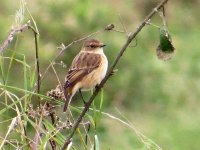Peter Kovalik
Well-known member

AOU-NACC Proposals 2021
2021-A-1b:Revise the classification of the Euphoniinae (Fringillidae): revise the linear sequence of the subfamily
2021-A-2: Split Band-rumped Storm-Petrel Hydrobates castro into three species
2021-A-3: Split Mew Gull Larus canus brachyrhynchus and rename as Short-billed Gull
2021-A-4: Revise generic limits in the Phalacrocoracidae (cormorants)
2021-A-5: Adopt split of Long-billed Gnatwren Ramphocaenus melanurus
2021-A-6: Change the linear sequence of the gnatcatchers (Polioptila spp.)
2021-A-7: Split Tropical Gnatcatcher Polioptila plumbea into two or more species
2021-A-8: Split Fregata rothschildi from Magnificent Frigatebird F. magnificens
2021-A-9: Resurrect Corthylio for Ruby-crowned Kinglet
2021-A-10: Change the linear sequence of species in Chaetura
2021-A-11: Reconsider the case to split Saxicola maurus and S. stejnegeri from Common Stonechat S. torquatus
2021-A-12: Resurrect Philodice as a separate genus from Calliphlox
2021-A-13: Treat McKay’s Bunting Plectrophenax hyperboreus as conspecific with Snow Bunting P. nivalis
Proposals 2021-A
2021-A-1a: Revise the classification of the Euphoniinae (Fringillidae): transfer Euphonia musica and E. elegantissima to resurrected genus Cyanophonia or to Chlorophonia2021-A-1b:Revise the classification of the Euphoniinae (Fringillidae): revise the linear sequence of the subfamily
2021-A-2: Split Band-rumped Storm-Petrel Hydrobates castro into three species
2021-A-3: Split Mew Gull Larus canus brachyrhynchus and rename as Short-billed Gull
2021-A-4: Revise generic limits in the Phalacrocoracidae (cormorants)
2021-A-5: Adopt split of Long-billed Gnatwren Ramphocaenus melanurus
2021-A-6: Change the linear sequence of the gnatcatchers (Polioptila spp.)
2021-A-7: Split Tropical Gnatcatcher Polioptila plumbea into two or more species
2021-A-8: Split Fregata rothschildi from Magnificent Frigatebird F. magnificens
2021-A-9: Resurrect Corthylio for Ruby-crowned Kinglet
2021-A-10: Change the linear sequence of species in Chaetura
2021-A-11: Reconsider the case to split Saxicola maurus and S. stejnegeri from Common Stonechat S. torquatus
2021-A-12: Resurrect Philodice as a separate genus from Calliphlox
2021-A-13: Treat McKay’s Bunting Plectrophenax hyperboreus as conspecific with Snow Bunting P. nivalis







